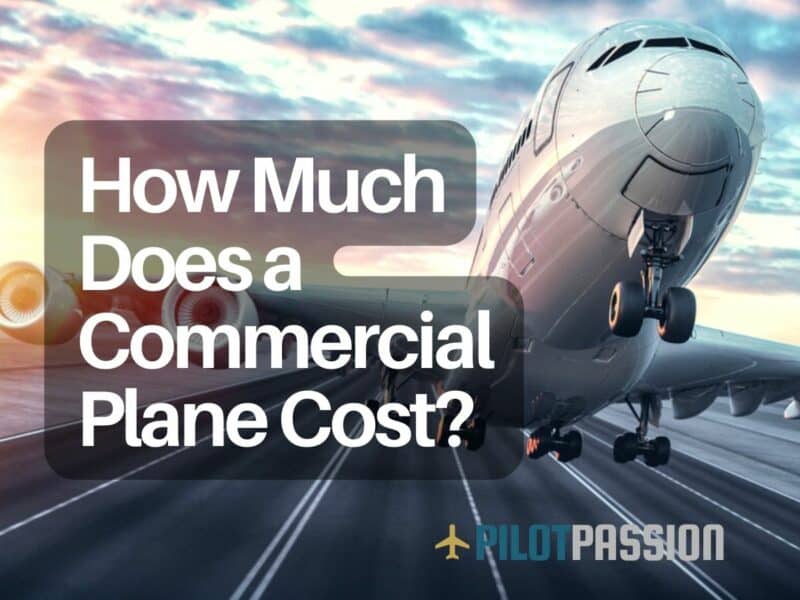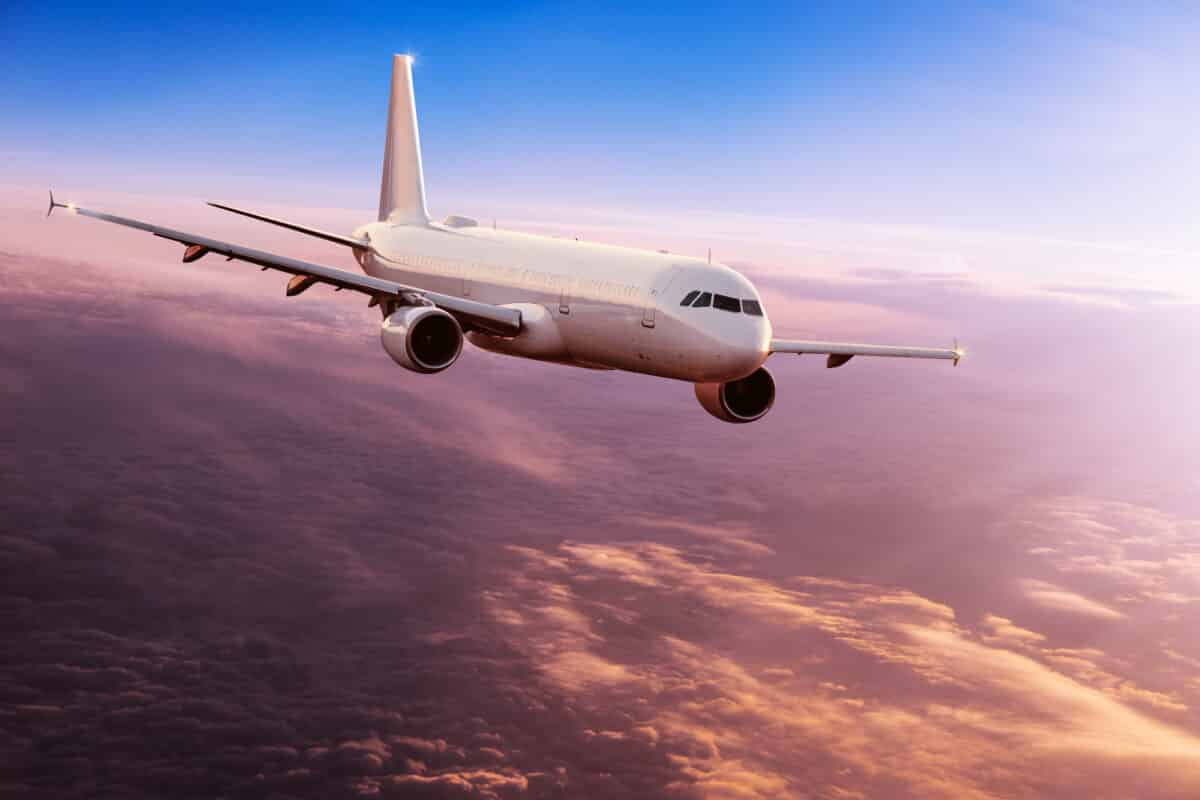In the high-flying world of commercial aviation, the sticker price on those sleek metal birds is just the tip of the iceberg. We’re diving headfirst into the financial stratosphere, where the true cost of owning a commercial plane unfolds with more twists than a mystery novel. From the enticing allure of bulk-buy discounts to the stealthy ambush of hidden fees, the price tag of commercial aircraft is a saga worth telling.
Take Boeing’s lineup, for instance, where the financial commitment kicks off at a cool $89.1 million for the modest 737-700, scaling up to a dizzying $442.2 million for the majestic 777-9. Meanwhile, Airbus counters with its own fleet, starting at $81 million for the compact A220-100, soaring to a staggering $445.6 million for the colossal A380-800.
So, fasten your seatbelts and prepare for takeoff as we explore the true costs of commercial aviation, a journey where the sky’s the limit for both ambition and expenses.
Table of Contents
Key Points That Explain How Much Does a Commercial Plane Cost
1. Commercial planes vary widely in size and price. A Boeing 737-700 is $89.1 million, while an Airbus A380-800 goes for $445.6 million. 2. Airlines can save with bulk orders or as launch customers, trimming list prices. 3. An airplane's price reflects its specifications, age, and custom features. 4. Operating costs like maintenance and fuel also affect total ownership expenses. 5. Leasing offers airlines flexibility and may lower initial costs.

How Much Does a Commercial Plane Cost? A Breakdown by Type
Boeing and Airbus lead in producing diverse commercial aircraft. These planes fulfill various roles, transporting passengers and cargo worldwide.
In this section, we will provide a brief overview of various commercial airplane types.
Narrow-Body (Boeing 737, Airbus A320)
Narrow-body aircraft, ideal for short to medium-haul flights, seat 100 to 240 passengers. Leading examples include the Boeing 737 and Airbus A320.
These incredible airplanes offer an efficient and economical solution for airlines, with relatively low operational costs. The average price of a new Boeing 737-700 is approximately $89.1 million, while the Airbus A320 costs around $89.6 million.
Wide-Body (Boeing 777, 787)
Wide-body aircraft like the Boeing 777 and 787 serve long-haul flights, with capacities of 250 to 450 passengers. These planes, able to cover intercontinental distances, can cost up to $442.2 million.
Regional Jets (CRJ, Embraer)
Regional jets, including the Bombardier CRJ series and Embraer E-Jets, are designed for short-haul flights, seating 50 to 100 passengers.
These private jet aircraft are ideal for regional routes and connecting smaller cities where the demand for air travel is lower. Regional jets offer a cost-effective solution for airlines, allowing them to expand their route networks without the need for larger aircraft.

Cargo Planes
Freighters like the Boeing 747 and 777F are pivotal for cargo transport, favored by international shippers for their vast capacity.
Here’s my deep dive on how much cargo planes cost.
These aircraft are essential to global trade, offering speedy delivery over long distances. A freighter like the Boeing 747-8F costs over $419.2 million.
Understanding commercial airplane costs involves factors like technology, market competition, and operational expenses. We’ll delve into the list prices of renowned Boeing and Airbus models, examine bulk order discounts, and compare competing models like the A320 and 737.
Commercial airplane prices from Boeing, Airbus, Bombardier, and Embraer vary widely by model.
| Manufacturer | Model | List Price (USD) |
|---|---|---|
| Airbus | A320neo | $100.6M |
| Airbus | A321 | $114.9M |
| Airbus | A330-300 | $256.4M |
| Boeing | 737-800 | $106.1M |
| Boeing | 737-900ER | $112.6M |
| Boeing | 747 (Prior to being discontinued) | $418.4M |
| Boeing | 777 | $352.3M |
| Bombardier | CRJ200 | $21M |
| Bombardier | CRJ900 | $42M |
| Embraer | E-Jet E175 | $28M |
Discuss Discounts Airlines Receive on Bulk Orders
Airlines often get discounts on bulk airplane purchases, influenced by order size, relationships with manufacturers, and the models bought. Though exact discount rates are typically confidential, significant savings are common.
Being a “launch customer” can lead to even greater discounts, as airlines help debut new models, providing valuable in-service feedback and credibility.
Compare Prices of Competing Models (E.G. A320 Vs. 737)
In comparing the Airbus A320 and Boeing 737, beyond purchase prices, technology and operating costs are crucial. The A320 lists at $101.0 million, and the 737-800 at $106.1 million.
Despite the 737-800’s higher price, airlines weigh fuel efficiency, maintenance, and resale value. These significantly influence total operating costs, vital in model comparison.
Factors Affecting Costs
Size, Range, Capacity
The price of a commercial airplane varies with size, range, and capacity. Larger planes, accommodating more passengers, cost more to buy and run due to increased fuel, materials, and maintenance needs.
Long-range aircraft necessitate more advanced technology and construction, adding to the upfront cost of the airplane. Higher capacity and longer range planes may lead to higher operational costs of a commercial plane, as they require more fuel and crew for each flight.
Avionics and Engines
Avionics and engine technologies are key to a commercial airplane’s cost. Advanced avionics systems, enhancing navigation and communication, raise the aircraft’s price. Engine innovations affect fuel efficiency, with high-performance engines offering long-term savings despite higher upfront costs.
Age of Aircraft (Used Vs. New)
The age of an aircraft impacts its price. Used planes, though less expensive initially, may demand more maintenance, increasing overall costs. Conversely, new planes incorporate the latest technologies, reducing maintenance and operational expenses but come with a higher purchase price.
Custom Interior Configurations
Airlines customizing interior layouts to reflect their brand or add amenities can expect added costs. The extent of customization, from seat designs to cabin layouts, influences the final airplane cost, varying with the materials and features selected.
Airlines need to carefully consider their interior design choices and budget to find a balance between providing customer comfort and managing the overall aircraft costs.
Who Buys Commercial Aircraft?
Mainly Airlines
Airlines worldwide, including major carriers such as United and American Airlines and smaller regional operators, are the principal buyers of commercial aircraft. They depend on these planes to provide safe, comfortable, and reliable services that meet the global demand for air travel.
Governments play a crucial role in the acquisition of commercial aircraft. They offer financial support to national airlines or purchase planes directly for government-operated flights. This involvement allows a wide array of operators to sustain and grow their fleets as necessary.
Leasing Companies
Leasing firms are key buyers in the commercial aviation market. They buy planes from makers and lease them to airlines. This lets airlines grow their fleets without huge initial costs.
It gives airlines the flexibility to scale their operations as needed. Leasing companies also support new airlines by supplying them with essential aircraft to start.
Some Corporate and Private Buyers (Celebrities)
Corporate and private buyers, including celebrities, form a niche in the aircraft market. They buy planes for personal or business travel.
Yet, the high costs lead most to prefer business jets over commercial planes.
Some folks like to indulge in opulence: get the scoop on the cost of hiring a private jet.
Additional Costs of Operation
Fuel, Maintenance, Crew
Discussing flight costs means looking beyond the aircraft’s purchase price. Operating costs, especially fuel, play a big role, with prices always changing. Airlines use fuel hedging to manage this volatility.
Maintenance is also a major cost. Safety and compliance require frequent checks and repairs. Older planes and complex systems increase these expenses.
Crew, airline pilot salaries, including flight crew and support staff, also contribute to operational costs. A crucial factor in airline operations, labor costs constitute a significant percentage of total expenses.
Airport Fees, Navigation Charges
Airport fees significantly impact operational costs. This includes landing, parking, and service fees.
Fees vary by airport, aircraft size, and usage. Navigation charges for air traffic control also apply, based on flight distance.
Financing Costs
Financing and insurance are key in flying costs. The aircraft’s acquisition method affects financing costs, influenced by interest rates and loan terms.
Insurance, covering damages and liability, also varies. Rates depend on the aircraft’s value, routes, and the airline’s safety record.
Final Thoughts On How Much A Commercial Plane Costs
Next time you’re relaxing high above, beverage in hand, appreciate the economic and engineering feats that make flight possible.
Aviation is a complex marvel. Behind the scenes, there’s a drive for safety, efficiency, and sustainability, connecting our world in ever better ways.
It’ll be a while before I whip out my own checkbook! For now, I’ll stick to wondering how much does a Cessna 172 cost. Or the price of a Cessna 182 price for that matter!
Here’s to smoother and even more affordable flights in the future! Safe travels!